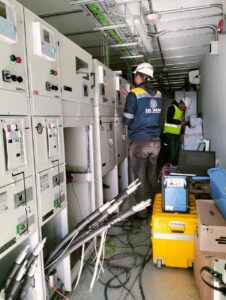Sustainability challenges in oil and gas development, which established a literature-based framework for clean fuel predominantly with reference to MENA region, and identifies the trend for oil and natural gas usage and their effect on the technologies and its human development index. What are the missing gaps for fossil fuel in order to obtain clean fuels, and how can those gaps identify and resolve the environmental issue by using fossil fuel as an energy source?
Recent Findings
The findings indicate that fossil fuel will remain the major source of energy and transportation fuels, which can be effectively refined using catalytic refining processes along with the CO2 capturing and storage techniques in order to reduce global warming.
Summary
Sustainable development refers to basic information about the social, economic, and environment aspects of human activity. Among the main driving elements of sustainability are the progress made in technology and the utilization of energy resources. Worldwide, the use of renewable energy sources may increase but has moderate progress. Thus, the fossil fuels are playing a vital role in the energy world but require efficient refining processes to produce high-quality clean fuels for transportation as well as energy production.
Energy developments by BP
Primary energy consumption growth slowed to 1.3% last year, less than half the rate of growth in 2018 (2.8%).

The increase in energy consumption was driven by renewables and natural gas, which together contributed three quarters of the expansion. All fuels grew at a slower rate than their 10-year averages, apart from nuclear.
By country, China was by far the biggest driver of energy, accounting for more than three quarters of net global growth. India and Indonesia were the next largest contributors to growth, while the US and Germany posted the largest declines.
+1.3%
growth of global primary energy consumption, less than half the growth rate in 2018
Oil

Oil consumption grew by a below-average 0.9 million barrels per day (b/d), or 0.9%. Demand for all liquid fuels (including biofuels) rose by 1.1 million b/d and topped 100 million b/d for the first time.
Oil consumption growth was led by China (680,000 b/d) and other emerging economies, while demand fell in the OECD (-290,000 b/d).
Global oil production fell by 60,000 b/d as strong growth in US output (1.7 million b/d) was more than offset by a decline in OPEC production (-2 million b/d), with sharp declines in Iran (-1.3 million b/d) Venezuela (-560,000 b/d) and Saudi Arabia (-430,000 b/d).
Refinery utilisation fell sharply by 1.2 percentage points as capacity rose by 1.5 million b/d and throughput remained relatively unchanged.
REFERENCES
https://www.worldwildlife.org/threats/oil-and-gas-development
https://www.petrofac.com/en-gb/sustainability/sustainable-development/
https://www.bp.com/en/global/corporate/energy-economics/statistical-review-of-world-energy/oil.html
https://www.nmtv.tv/global-warming-increases-the-risk-of-river-flooding-over-the-coming-decades/
https://www.petrofac.com/media/5088/petrofac-2019-annual-report.pdf





